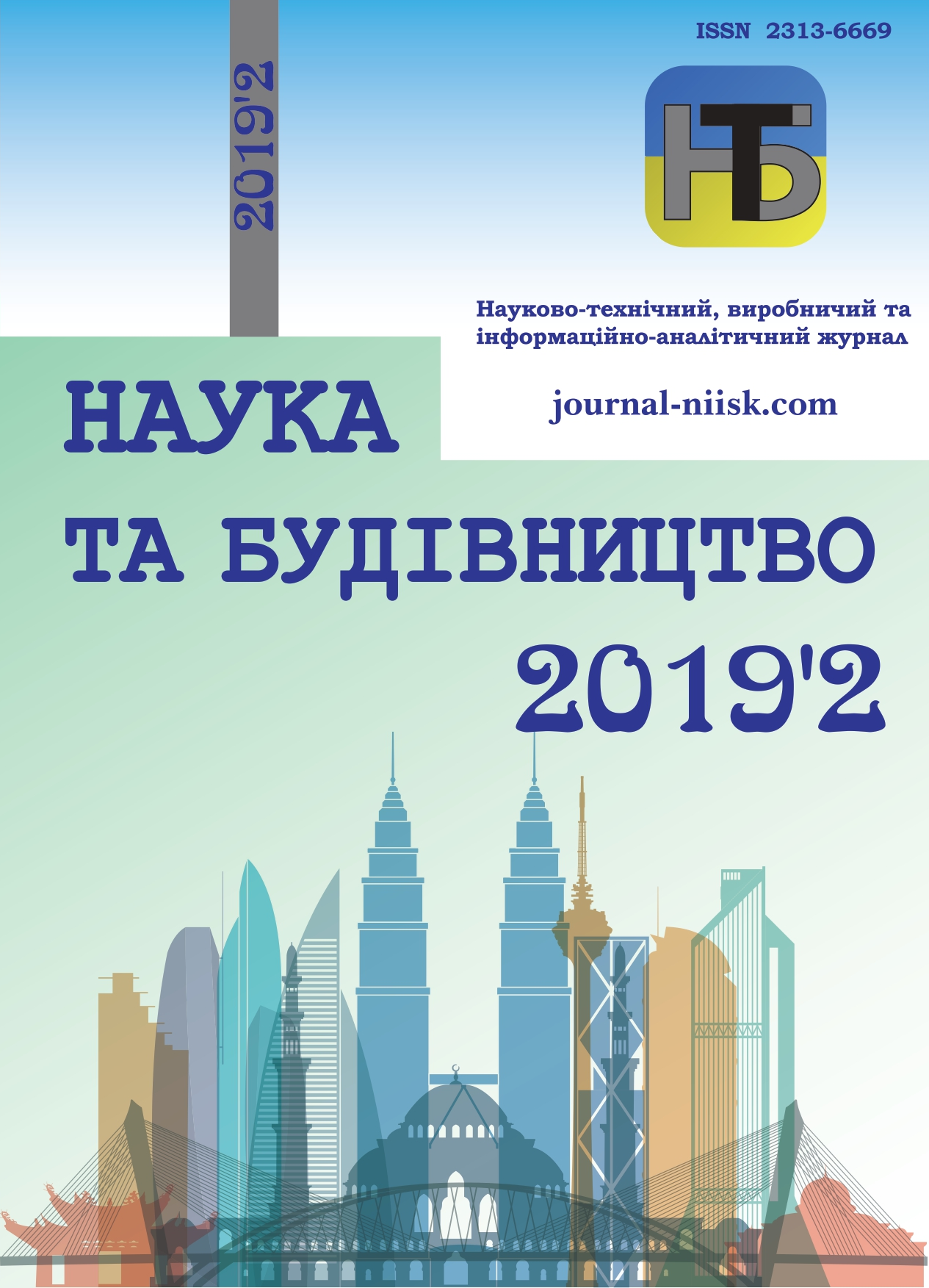Calculation of the natural rate of air exchange per hour and its influence on the energy needs of buildings in net dynamic models
Abstract
The buildings energy characteristics are influenced by a large number of external and internal factors. One of the most influential parameters is the air exchange rate, which has a natural (infiltration) and mechanical nature. The air exchange rate natural component depends on a large number of factors and its value varies for different premises with the same envelope thermophysical properties. The paper presents the results of the mathematical modeling of the building energy need per hour schedule for the base level with the standard value of the air exchange rate, as well at the calculated value of the air exchange rate natural component varying according to natural conditions. The results of rating determined that for premises with modern envelopes the calculated value of the air exchange rate natural component does not exceed 0.25 h-1. Therefore, the application of those values of the air exchange rate results in the energy need decrease up to 50%, compared with the baseline. In the room it is necessary to ensure the standard multiplicity of air exchange, which must be offset by the mechanical component of air exchange. Taking into account the actual rate of natural air exchange in the premises of the variable occupancy improves the attractiveness of the thermo-modernization with energy-saving measures, as well as determines the component that must be provided by mechanical ventilation and, therefore, can be utilized in the recuperative heat exchangers as well.
Downloads
References
Maslesa, I. E., Jensen, P. A., & Birkved, M. (2018). Indicators for quantifying Environmental Building Performance: A systematic literature review. Journal of Building Engineering, 19, 552-560.
Bilous, I. Yu., Deshko, V. I., & Sukhodub, I. O. (2016). Building inside air temperature parametric study. Magazine of Civil Engineering, 8, 65–75.
Mechouet, A., Mouhib, T., Balhamri, A., & Ouali, E. M. (2018). Evaluating the impact of air infiltrations on the thermal and energy performances for different types of dwellings in casablanca city. International Journal of Mechanical and Production Engineering Research and Development, 8, 793-800.
Guidelines for the implementation of thermomodernisation of residential buildings: DSTU-N B V.3.2-3:2014. (2015).
Younes, C., Abishihid, C., & Bitsuamlak, G. (2011). Air infiltration through building envelopes: a review. Journal of Building Physics, 35-3, 267-302.
Bilous, I. Yu. (2019). Rating of building energy performance in the conditions of dynamic change of environmental characteristics. (PhD thesis). Kyiv.
Kalamees, T. (2007). Air tightness and air leakages of new lightweight single-family detached houses in Estonia. Building and Environment, 42, 2369-2377.
Jokisalo, J., Kurnitski, J., Korpi, M., Kalamees, T., & Vinha, J. (2009). Building leakage, infiltration, and energy performance analyses for finnish detached houses. Building and Environment, 44, 377-387.
Chen, S., Levine, M. D., Li, H., Yowargana, P., & Xie, L. (2012). Measured air tightness performance of residential buildings in North China and its influence on district space heating energy use. Energy and Buildings, 51, 157–164.
Bilous, I., Deshko, V., & Sukhodub, I. (2018). Parametric analysis of external and internal factors influences on building energy performance using non-linear multivariate regression models. Journal of Building Engineering, 20, 327-336.
Leprince, V. (2011). Les rencontres de l’Arcad. Etanchéité à l’air des enveloppes,
Emmerich, S. J., Persily, A. K., & McDowell, T. P. (2005). Impact of infiltration on heating and cooling loads in US office buildings. The 26th IEA Conference of the Air Infiltration and Ventilation Center.
Energy performance of buildings. Method for calculation of energy use for space heating, cooling, ventilation, lighting and domestic hot water: DSTU B А.2.2-12:2015. (2016).
Bilous, I. Yu., & Deshko, V. I. (2018). Mathematical models for determination of specific energy need for heating and cooling of the administrative building. International Journal of Engineering & Technology, 7 (4.3), 325-330.
Energy performance of buildings. Calculation of energy use for space heating and cooling: EN 13790:2008. (2008).
Thermal performance of building components. Dynamic thermal characteristics. Calculation methods: EN ISO 13786:2007 (2007).
International Weather for Energy Calculations. Retrieved from https://energyplus.net/weather-location/europe_wmo_region_6/UKR//UKR_Kiev.333450_IWEC
Biler, A., Tavil, A. U., Su, Y., & Kha, N. (2018). A Review of Performance Specifications and Studies of Trickle Vent. Buildings, 8.
Berge, A. (2011). Analysis of Methods to Calculate Air Infiltration for Use in Energy Calculations. Göteborg (Sweden): Chalmers University of Technology.
Ventilation and Acceptable Indoor Air Quality in Low-Rise Residential Buildings: ASHRAE Standard 62.2-2003. (2003).
ASHRAE Fundamentals Handbook. (1997).
Buildings and structures. Method for determination of air permeability of building envelope in field conditions: DSTU B V.2.2-19:2007. (2008).
Abstract views: 336 PDF Downloads: 655
Copyright (c) 2019 М.V. Tymofeyev, V.I. Deshko, I.Yu. Bilous, H.O. Hetmanchuk

This work is licensed under a Creative Commons Attribution 4.0 International License.


.png)



